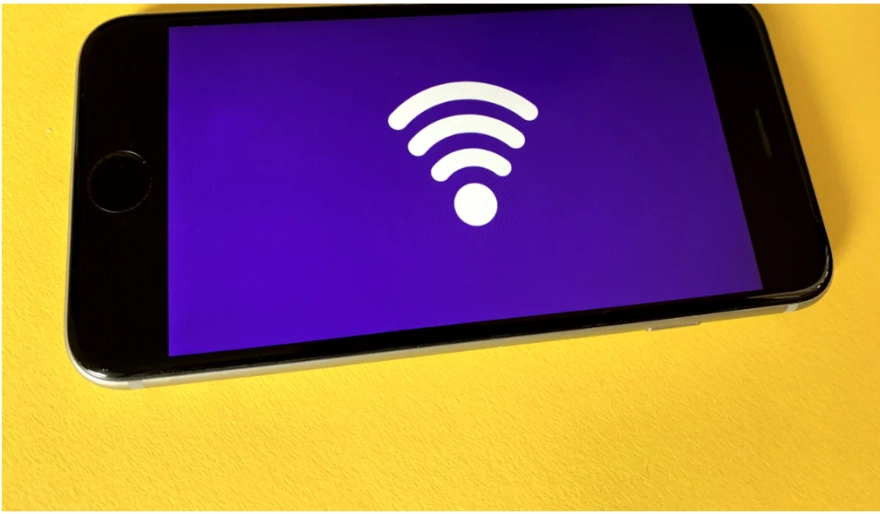6G Is Coming: How Will It Change Mobile Connectivity?
51 min read 6G is coming, and it promises to revolutionize how you connect to the world. Imagine downloading an entire movie in seconds or experiencing virtual reality without any lag.written by Wiliam Ihsan, Content Creator January 15, 2024 09:15
Image Source: pexels
6G is coming, and it promises to revolutionize how you connect to the world. Imagine downloading an entire movie in seconds or experiencing virtual reality without any lag. With projected speeds of up to 1,000 Gbps and latency reduced to microseconds, 6G will make real-time interactions seamless. It will also connect ten times more devices than 5G, creating a robust network for the Internet of Things (IoT). This leap in technology will enhance reliability and security through advancements like artificial intelligence and quantum computing, ensuring safer and smarter connectivity for you.
Did you know? North America is expected to lead the global 6G market with a projected size of $364.12 million, followed by China at $251.14 million.
This next-generation technology will not only transform industries but also redefine your everyday experiences.
Key Takeaways
- 6G will be super fast, with speeds up to 1 terabit per second. Downloads and streaming will happen almost instantly.
- 6G will have very low delay, helping real-time tasks like remote surgeries and self-driving cars.
- AI will make 6G networks smarter. It will fix problems and work better.
- 6G wants to connect everyone, even in rural areas, using satellites.
- 6G will use less energy, helping the planet by saving power and being eco-friendly.
What Is 6G? Key Features and Innovations
Defining 6G Technology
6G represents the next evolution in wireless communication, building on the foundation of 5G. It aims to deliver transformative experiences by integrating cutting-edge technologies. You can expect 6G to revolutionize how you interact with the digital world. From immersive realities like augmented reality (AR) and virtual reality (VR) to the metaverse, 6G will make these experiences more interactive and lifelike. It will also leverage digital twins—virtual replicas of physical objects or systems—to provide real-time insights and predictive analysis. Additionally, seamless cloud access will enable faster data management and collaboration, making your digital interactions smoother than ever.
Ultra-high Speed and Microsecond Latency
Speed and latency are two defining features of 6G. Imagine downloading a full-length movie in just a second or experiencing real-time applications like remote surgery without any delay. 6G is projected to deliver speeds up to 1 terabit per second (Tbps), which is 100 times faster than 5G. Latency, or the time it takes for data to travel, could drop to just a few microseconds. This ultra-low latency will enable real-time interactions, critical for applications like autonomous vehicles and advanced robotics. With 6G, you’ll experience a level of connectivity that feels instantaneous, opening doors to innovations that were previously unimaginable.
Intelligent Networks Powered by AI
Artificial intelligence (AI) will play a central role in 6G networks, making them smarter and more efficient. AI will automate network operations, allowing the system to identify and resolve issues before they affect you. Predictive analytics will enhance reliability by anticipating potential problems and addressing them proactively. The International Telecommunications Union (ITU) has proposed an AI-native air interface for 6G, which will optimize functions like symbol detection and channel estimation. This integration of AI will not only improve performance but also enable real-time decision-making, crucial for applications like autonomous driving and smart cities.
Did you know? AI in 6G networks will also contribute to sustainability by optimizing resource usage and reducing energy consumption.
Energy Efficiency and Sustainability
Energy efficiency and sustainability are at the heart of 6G development. As you rely more on connected devices, the demand for energy-efficient networks grows. 6G aims to address this by introducing smarter technologies that reduce energy consumption while maintaining high performance.
One of the key innovations in 6G is the use of AI-driven energy management. AI will optimize network operations, ensuring that resources are used only when needed. For example, base stations can enter low-power modes during periods of low activity, saving energy without compromising connectivity. This approach minimizes waste and helps reduce the carbon footprint of mobile networks.
* Fun Fact: The telecommunications industry accounts for about 2-3% of global energy consumption. 6G could significantly lower this percentage.
6G will also incorporate energy-harvesting technologies. These systems can capture energy from the environment, such as solar, wind, or even radio waves, to power devices. Imagine your smartphone charging itself using ambient energy—no more worrying about running out of battery!
Additionally, 6G networks will support green infrastructure. By using advanced materials and energy-efficient hardware, network providers can build systems that last longer and consume less power. This shift will contribute to a more sustainable future for you and the planet.
You’ll also benefit from sustainable IoT solutions. Smart cities powered by 6G will use sensors to monitor energy usage, reduce waste, and optimize resources. For instance, streetlights could adjust brightness based on traffic, saving electricity.
Takeaway: With 6G, you’re not just getting faster speeds. You’re also supporting a greener, more sustainable world. 🌍
6G Is Coming: How It Differs from 5G
Speed and Data Transfer Advancements
The leap from 5G to 6G will redefine how you experience speed and data transfer. While 5G supports speeds up to 10 Gbps, 6G is expected to reach an astonishing 1 terabit per second (Tbps). This means you could download massive files or stream ultra-high-definition content in mere seconds. The user-experienced data rate will also improve, offering consistent speeds of 1 Gbps, even in crowded areas.
Latency, or the delay in data transmission, will also see a dramatic improvement. 5G reduced latency to 1 millisecond, enabling real-time applications. However, 6G aims to lower this to less than 0.1 milliseconds. This improvement will be crucial for advanced technologies like brain-computer interfaces and other applications requiring instantaneous responses.
Reduced Latency for Real-time Interactions
6G will revolutionize real-time interactions by drastically reducing latency. Time-Sensitive Networking will ensure predictable traffic flow and ultra-low delays. This improvement will enhance applications like autonomous vehicles, robotics, and telemedicine. For example, remote surgeries will become safer and more precise due to the near-instantaneous data transfer.
You will also see benefits in emergency response systems and industrial automation. With latency reduced to less than 0.1 milliseconds, these systems will operate without delays, ensuring faster and more reliable performance. This level of responsiveness will make 6G indispensable for delay-sensitive applications.
Increased Device Connectivity and Network Density
6G will connect more devices than ever before. While 5G supports up to one million devices per square kilometer, 6G is expected to handle ten times that number. This increase will enable seamless connectivity in smart cities, crowded events, and IoT ecosystems.
The spectral efficiency of 6G will also improve, reaching 100 bps/Hz compared to 30 bps/Hz in 5G. This means networks will use spectrum resources more efficiently, ensuring better performance even in high-demand scenarios. Additionally, multi-connectivity will allow devices to connect to multiple networks simultaneously, enhancing reliability and efficiency in environments like smart homes and urban centers.
Tip: With 6G, you’ll experience a world where every device stays connected, no matter how dense the network becomes.
Enhanced Reliability and Coverage
One of the key advancements in 6G is its ability to provide consistent coverage in rural and remote areas. Current networks often fail to deliver strong signals in these regions. With 6G, you can expect better connectivity through advanced technologies like satellite integration and intelligent beamforming. These innovations will ensure that even the most isolated locations stay connected.
Urban areas will also benefit from enhanced reliability. Dense environments, such as cities or stadiums, often experience network congestion. 6G will solve this issue by supporting higher network capacity and smarter resource allocation. You will enjoy seamless connectivity, even in crowded spaces.
Another exciting feature of 6G is its self-healing capabilities. AI-powered networks will detect and fix issues automatically, ensuring uninterrupted service. For example, if a base station fails, the network will reroute traffic to maintain your connection. This level of reliability will be essential for applications like autonomous vehicles and smart grids.
6G is coming, and it will redefine what you expect from mobile networks. Whether you are in a bustling city or a remote village, you will experience consistent and reliable coverage. This transformation will make connectivity more inclusive and accessible for everyone.
Tip: With 6G, you can rely on your network to stay connected, no matter where you are.
Practical Applications of 6G

Image Source: pexels
Smart Cities and IoT Integration
6G will play a pivotal role in transforming urban areas into smart cities. Its ultra-low latency and massive bandwidth will enable real-time IoT applications, making cities more efficient and sustainable. You’ll see smarter traffic management systems that optimize traffic flow using real-time data. Autonomous vehicles will navigate seamlessly, reducing congestion and accidents.
The technology will also enhance energy efficiency. Smart energy grids powered by 6G will integrate renewable energy sources, minimizing waste. For example, buildings can adjust heating and cooling systems automatically based on occupancy and weather conditions. This will save energy and reduce costs. Additionally, 6G will support millions of connected devices per square kilometer, ensuring seamless communication between IoT devices in urban infrastructures.
Tip: With 6G, your city could become a model of sustainability and innovation.
Real-time Healthcare and Remote Monitoring
6G will revolutionize healthcare by enabling real-time data transfer and ultra-reliable connectivity. You’ll benefit from faster, more accurate diagnostics. High-resolution imaging will improve medical diagnostics, while wearable devices will continuously monitor your vital signs. Doctors will access real-time health data, allowing timely interventions.
Telemedicine will also reach new heights. Near-zero latency will make remote surgeries and consultations more effective. Imagine a specialist performing surgery from another continent with precision tools powered by 6G. Collaborative diagnostics will allow multiple experts to analyze medical data together in real-time, improving patient outcomes. In underserved areas, remote imaging and tele-radiology will bring advanced healthcare to those who need it most.
Did you know? 6G will also support immersive AR and VR experiences for medical training, helping doctors learn complex procedures in a virtual environment.
Immersive AR/VR and the Metaverse
6G will redefine how you experience augmented and virtual reality. Lightning-fast speeds and minimal latency will enable high-quality, real-time VR content without lag. This will make gaming, education, and remote collaboration more engaging. For example, students could explore historical landmarks in a virtual classroom or surgeons could practice procedures in a simulated environment.
The metaverse will also thrive with 6G. Enhanced connectivity will allow seamless interaction between virtual and physical worlds. Advanced haptic feedback will let you feel virtual objects, making digital experiences more immersive. AI integration will further enhance AR/VR applications, creating smarter and more responsive environments. Whether you’re gaming, learning, or working, 6G will make these experiences more interactive and lifelike.
Takeaway: 6G Is Coming, and it will bring the metaverse closer to reality, transforming how you interact with the digital world.
Autonomous Vehicles and Advanced Transportation
6G will revolutionize how you experience transportation. Autonomous vehicles (AVs) will benefit immensely from the ultra-low latency and high-speed connectivity that 6G offers. These advancements will make self-driving cars safer, smarter, and more efficient.
With 6G, vehicles will communicate with each other and surrounding infrastructure in real time. This feature, known as vehicle-to-everything (V2X) communication, will allow cars to share data about traffic, road conditions, and potential hazards. For example, if a car detects icy roads, it can instantly alert nearby vehicles, helping you avoid accidents.
Did you know? 6G’s latency of less than 0.1 milliseconds will enable AVs to make split-second decisions, reducing reaction times and improving safety.
Public transportation will also see significant improvements. Smart buses and trains will use 6G to optimize routes based on real-time passenger demand. This will reduce wait times and make your commute more efficient. Additionally, 6G-powered drones could transform package delivery, ensuring faster and more reliable service.
Here’s how 6G will enhance transportation systems:
- Improved Safety: Real-time data sharing will help prevent collisions and improve traffic flow.
- Energy Efficiency: AI-driven systems will optimize fuel usage and reduce emissions.
- Enhanced Navigation: High-precision GPS will guide vehicles more accurately, even in dense urban areas.
Tip: With 6G, you’ll experience a future where transportation is not only faster but also safer and more sustainable. 🚗✨
Imagine a world where your car drives itself, avoids traffic, and communicates with other vehicles to ensure a smooth journey. 6G will make this vision a reality, transforming how you travel and interact with transportation systems.
Timeline for 6G Development and Rollout
Current Research and Development Progress
The development of 6G technology is advancing rapidly through collaborations among researchers, industry leaders, and governments. You’ll notice several key focus areas shaping this progress:
- Terahertz communication is being explored to deliver data speeds up to 100 times faster than 5G.
- AI integration is a priority, enabling smarter and more autonomous networks.
- Sustainable networking solutions are being developed to reduce energy consumption.
- Reconfigurable Intelligent Surfaces (RIS) are being researched to improve communication efficiency.
Significant investments are driving these innovations. In November 2023, the International Telecommunication Union (ITU) approved a 6G vision, marking a major milestone. Researchers are also working on quantum communication security and machine learning models for network management. Pilot projects and early standardization efforts are already underway, preparing for the next phase of development.
Key Milestones in 6G Standardization
The journey to 6G standardization involves several critical steps. Here’s a timeline of key milestones:
These milestones highlight the structured approach to defining and refining 6G standards.
Projected Rollout Dates and Global Adoption
The global rollout of 6G is expected to follow a well-defined timeline. Development will begin in mid-2025, with initial specifications established by June 2026. The groundwork for 6G will be laid with 3GPP Release 19, set for completion in late 2025.
You can anticipate the commercial release of 6G around 2030. By then, refinements from subsequent releases will ensure a robust and reliable network. This timeline positions 6G as the foundation for the next era of connectivity, transforming how you interact with technology.
Tip: Staying informed about these developments will help you prepare for the exciting changes 6G will bring.
Challenges in 6G Development
Infrastructure and Deployment Costs
Building 6G networks will require significant investments in infrastructure. You’ll see the need for new base stations, advanced antennas, and cutting-edge hardware to support the high-frequency bands that 6G demands. These upgrades won’t come cheap. The cost of deploying 6G networks could surpass the already high expenses of 5G, making it a challenge for telecom companies and governments alike.
Rural and remote areas will face even greater hurdles. Extending 6G coverage to these regions will require innovative solutions, such as satellite-based networks or energy-efficient base stations. Without these advancements, the digital divide could widen, leaving some communities behind. To address this, governments and private sectors must collaborate to share costs and ensure equitable access.
Tip: Supporting public-private partnerships can help reduce deployment costs and make 6G accessible to everyone.
Security and Privacy Concerns
The advanced capabilities of 6G bring new security and privacy challenges. With faster data exchanges and more connected devices, you’ll face increased risks of cyber-attacks. Hackers could exploit the complexity of 6G networks to launch sophisticated attacks, such as identity theft or data breaches. Unauthorized monitoring and surveillance may also become more prevalent, raising serious privacy concerns.
Here are some key risks you should be aware of:
- Large-scale data breaches due to the massive data capacity of 6G networks.
- Unauthorized surveillance enabled by advanced monitoring technologies.
- Vulnerabilities in IoT devices connected through 6G, increasing exposure to cyber threats.
- Risks of data interception and manipulation during high-speed exchanges.
- Potential backdoors in AI-driven systems, which attackers could exploit.
To combat these threats, 6G networks will need robust encryption, AI-powered security protocols, and comprehensive strategies to protect user data. As a user, you’ll benefit from these measures, but staying informed about privacy risks will remain essential.
Did you know? The complexity of 6G networks could make them a target for multi-vector cyber-attacks by well-resourced adversaries.
Spectrum Allocation and Regulation
Allocating spectrum for 6G networks presents another major challenge. You’ll need access to a wide range of frequencies, including higher bands like terahertz, to unlock 6G’s full potential. However, the availability of these bands is limited, and securing them requires global cooperation among regulators.
Each country has its own regulations, which can lead to inconsistencies and delays. For example, some regions may prioritize certain frequency bands over others, creating barriers to global adoption. To overcome this, international organizations must work together to establish unified standards and ensure fair distribution of spectrum resources.
Takeaway: Global collaboration is key to overcoming spectrum challenges and ensuring the smooth rollout of 6G networks.
Bridging the Digital Divide
6G has the potential to bridge the digital divide, ensuring everyone has access to reliable and fast connectivity. Today, millions of people lack access to the internet, especially in rural and underserved areas. This gap limits opportunities for education, healthcare, and economic growth. With 6G, you could see a world where connectivity becomes a basic right, not a privilege.
One of the key ways 6G can help is through satellite-based networks. These networks will extend coverage to remote regions where traditional infrastructure is too expensive or impractical. Imagine living in a rural area and still enjoying the same high-speed internet as someone in a bustling city. 6G will make this possible by integrating satellites with terrestrial networks.
Did you know? Over 2.7 billion people worldwide remain offline. 6G could drastically reduce this number by providing affordable and accessible connectivity.
Another innovation is energy-efficient base stations. These stations will lower operational costs, making it easier to deploy networks in low-income areas. Governments and private companies can collaborate to subsidize these deployments, ensuring no one gets left behind.
6G will also support affordable devices. By optimizing hardware and software, manufacturers can produce cost-effective smartphones and IoT devices. This will allow more people to connect to the network without financial barriers.
Tip: Advocating for policies that promote equitable access to 6G technology can help close the digital divide faster.
With 6G, you’ll witness a future where everyone, regardless of location or income, can participate in the digital economy. This transformation will empower communities, improve education, and create new opportunities for millions of people. 🌍✨
6G is coming, and it promises to redefine how you connect with the world. Its ultra-fast speeds, intelligent networks, and low latency will revolutionize industries and enhance your daily life. Imagine real-time holographic calls, smarter cities, and safer autonomous vehicles—all powered by 6G. However, challenges like infrastructure costs, data privacy, and regulatory hurdles must be addressed to unlock its full potential.
Staying informed about 6G developments will prepare you for this transformative leap. As the technology evolves, it will shape a more connected, efficient, and inclusive future for everyone.
FAQ
What is the main difference between 5G and 6G?
6G offers speeds up to 1 terabit per second, which is 100 times faster than 5G. It also reduces latency to microseconds, enabling real-time interactions. You’ll experience better reliability, higher device connectivity, and smarter networks powered by AI.
When will 6G be available for public use?
You can expect 6G to roll out commercially around 2030. Researchers and industry leaders are currently working on its development, with key milestones in standardization expected between 2024 and 2029.
How will 6G improve daily life?
6G will enhance your life by enabling real-time healthcare, immersive AR/VR experiences, and smarter cities. Autonomous vehicles will become safer, and IoT devices will work seamlessly. Faster speeds and low latency will make everyday tasks more efficient.
Will 6G be accessible in rural areas?
Yes, 6G aims to bridge the digital divide. Satellite-based networks and energy-efficient base stations will extend coverage to remote areas. You’ll enjoy reliable connectivity, even in regions where traditional networks struggle.
How will 6G address energy consumption?
6G will use AI-driven energy management and energy-harvesting technologies to reduce power usage. Base stations will enter low-power modes during inactivity, and devices may charge using ambient energy. This makes 6G more sustainable and eco-friendly.



















